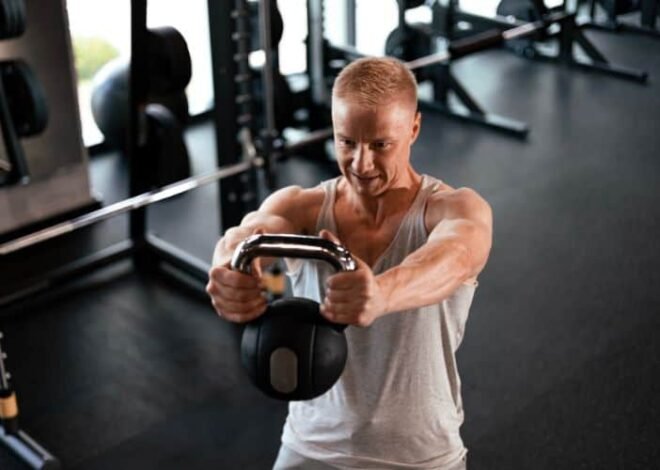Plyometric Training for Explosive Fitness Gains

In current years, plyometric coaching has gained immense reputation for its capability to spice up athletic efficiency, increase energy, and improve total fitness. Also generally known as “jump training,” plyometrics focuses on explosive actions that contain fast stretching and contracting of muscular tissues. Whether you’re an athlete aiming to improve energy or just wanting so as to add depth to your workout routine, plyometric coaching affords a dynamic strategy to obtain your fitness targets.
What is Plyometric Training?
Plyometric coaching includes workouts designed to increase energy and explosiveness by way of quick, high-intensity actions. These workouts give attention to producing most drive within the shortest quantity of time, usually using leaping, bounding, or hopping actions. By focusing on the stretch-shortening cycle of muscular tissues, plyometrics practice the physique to retailer and launch vitality effectively, resulting in larger energy output during bodily actions like working, leaping, or lifting.
The Science Behind Plyometrics
The stretch-shortening cycle (SSC) is the physiological foundation of plyometric coaching. This cycle consists of three phases:
- Eccentric Phase: During this part, muscular tissues lengthen whereas absorbing drive, storing potential vitality (like a stretched rubber band).
- Amortization Phase: This is the temporary transition between eccentric and concentric actions. The shorter this part, the more effectively your muscular tissues can convert saved vitality into explosive energy.
- Concentric Phase: In this part, the muscular tissues contract explosively, releasing saved vitality and producing motion.
The quicker and more successfully these phases happen, the more highly effective the ensuing motion.
Benefits of Plyometric Training
Plyometric coaching offers a wide selection of bodily advantages, making it an important part for athletes and fitness lovers alike.
1. Increased Power and Speed
Plyometrics is especially efficient for developing explosive energy. The fast, forceful contractions help muscular tissues generate a important quantity of energy in a short period. Athletes comparable to sprinters, soccer gamers, and basketball gamers use plyometrics to improve their begin pace, acceleration, and vertical bounce capability.
2. Improved Strength
Although plyometric workouts primarily give attention to pace and energy, in addition they build muscular strength. The explosive actions recruit fast-twitch muscle fibers, that are key to growing energy. Over time, incorporating plyometric coaching into your routine can improve your total capability to raise heavier weights and transfer more dynamically.
3. Enhanced Coordination and Agility
Plyometric workouts require exact timing, coordination, and stability. By difficult the physique to carry out fast, complicated actions, plyometrics improves neuromuscular coordination and enhances agility, which is essential for sports activities efficiency and on a regular basis actions.
4. Better Cardiovascular Fitness
Plyometric workouts are high-intensity by nature, making them a great kind of cardiovascular training. Incorporating jumps, hops, and sprints elevates your coronary heart price and burns energy, making plyometrics an efficient exercise for bettering cardiovascular endurance and fats loss.
5. Increased Bone Density
The influence forces generated during plyometric workouts help improve bone density, lowering the risk of osteoporosis and different age-related bone points. Plyometric coaching stimulates the bones to change into stronger and more resilient by inserting stress on them, significantly during leaping and touchdown.
How to Incorporate Plyometrics Into Your Workout Routine
Incorporating plyometric workouts into your exercise routine can improve athletic efficiency and increase your workout intensity. However, it’s important to take action steadily, particularly in the event you’re new to this sort of coaching.
1. Start With a Solid Foundation
Plyometrics could be demanding in your muscular tissues and joints, so it’s important to have a sturdy basis of energy and adaptability. If you’re a newbie, spend a few weeks developing primary energy by way of workouts like squats, lunges, and push-ups earlier than introducing plyometric actions.
2. Warm Up Properly
A correct warm-up is essential earlier than participating in any kind of plyometric coaching. Dynamic stretches, mobility exercises, and lightweight cardio can put together your muscular tissues and joints for the explosive calls for of plyometrics. This will scale back the risk of damage and improve your total efficiency.
3. Choose the Right Exercises
There are a selection of plyometric workouts that concentrate on completely different muscle teams. Start with less complicated actions earlier than progressing to more complicated ones. Below are some examples of newbie, intermediate, and superior plyometric workouts.
Plyometric Exercises
Beginner Plyometric Exercises
If you’re new to plyometrics, these workouts are a great start line:
1. Jump Squats
Jump squats are a primary plyometric coaching train that helps construct explosive energy within the legs. Start in a squat place, bounce as high as you possibly can, and land softly back into the squat.
2. Box Jumps
Box jumps are wonderful for bettering lower-body energy and coordination. Stand in entrance of a field or platform, bounce onto it with each ft, after which step down. Focus on a gentle touchdown to keep away from stressing the knees.
3. Plyometric Push-Ups
This train targets the higher physique. Begin in a common push-up place, decrease your chest, and explosively push off the ground, lifting your palms barely earlier than touchdown softly back into the push-up.
Intermediate Plyometric Exercises
Once you’ve mastered the newbie actions of plyometric coaching, problem your self with these intermediate workouts:
1. Lateral Bounds
Lateral bounds improve energy and agility, significantly within the decrease physique. Start by standing on one leg, bounce laterally to the other aspect, and land on the opposite leg. Repeat this movement whereas sustaining stability and control.
2. Tuck Jumps
Tuck jumps require you to leap as high as doable whereas pulling your knees towards your chest. Land softly and repeat the motion in fast succession. This train will increase leg energy and explosiveness.
3. Plyometric Lunges
Plyometric lunges are an wonderful strategy to develop leg energy and coordination. Start in a lunge place, bounce explosively to change legs in mid-air, and land softly back into the lunge on the other leg.
Advanced Plyometric Exercises
For seasoned athletes or these skilled with plyometric coaching, these superior workouts can take your coaching to the subsequent stage:
1. Depth Jumps
Depth jumps are one of essentially the most superior plyometric workouts for building lower-body explosiveness. Stand on a field or platform, step off, and instantly bounce as high as doable upon touchdown.
2. Single-Leg Box Jumps
Single-leg field jumps problem stability, coordination, and energy. Start by standing on one leg, bounce onto a field, and land on the identical leg. This train is especially helpful for athletes who need single-leg energy, comparable to runners or skaters.
3. Clap Push-Ups
Clap push-ups require important upper-body energy and explosiveness. Perform a commonplace push-up, however push off the ground with enough drive to clap your palms earlier than touchdown.
Programming Plyometrics: How Much Is Enough?
Plyometric coaching is very efficient however could be taxing on the physique. It’s important to strike a stability in your exercise routine to keep away from overtraining and damage.
Frequency
For rookies, plyometric coaching 2-3 occasions per week is enough to begin seeing enhancements in energy, energy, and agility. Advanced athletes can practice plyometrics 3-4 occasions a week, relying on their total coaching quantity.
Reps and Sets
The quantity of reps and units will range primarily based in your fitness stage and targets. For energy development, give attention to 2-4 units of 4-8 reps for every train. It’s important to take care of high depth and high quality in every motion, so keep away from performing too many repetitions, which may result in fatigue and decreased efficiency.
Safety Considerations
Due to the high-impact nature of plyometric coaching workouts, security is paramount. Follow these tricks to keep injury-free:
1. Focus on Proper Form
Maintaining correct kind is crucial in stopping damage. Whether you’re leaping, touchdown, or pushing off the ground, make sure your joints are aligned, and also you’re participating the right muscular tissues.
2. Use Proper Surfaces
Perform plyometric workouts on a gentle floor, comparable to a mat or grass, to cut back the influence in your joints. Avoid arduous surfaces like concrete, which may increase the risk of damage.
3. Gradually Increase Intensity
Don’t bounce into superior workouts earlier than mastering the fundamentals. Gradually increase the depth, peak, or distance of your plyometric actions to permit your physique to adapt.
Plyometric Training for Specific Sports
Athletes from numerous sports activities can benefit from plyometric coaching, which reinforces pace, energy, and coordination. Below are some examples of how completely different athletes can incorporate plyometrics into their coaching.
Plyometrics for Basketball
Basketball gamers can use plyometric workouts to improve their vertical bounce, quickness, and agility. Exercises like field jumps, depth jumps, and tuck jumps immediately translate to raised efficiency on the courtroom.
For soccer gamers, explosive energy is crucial for tackling, sprinting, and leaping. Plyometric drills like lateral bounds, plyometric push-ups, and depth jumps can improve these key athletic attributes.
Plyometrics for Track and Field
Track and area athletes, particularly sprinters and jumpers, benefit significantly from plyometric coaching. Exercises comparable to single-leg bounds, depth jumps, and plyometric lunges can improve acceleration and takeoff energy.
Plyometric coaching affords an efficient and dynamic strategy to improve energy, energy, and athletic efficiency. Whether you’re a newbie or an superior athlete, incorporating plyometric workouts into your routine can elevate your fitness to new ranges. By following correct development, specializing in kind, and making certain sufficient restoration, you possibly can unlock the complete potential of plyometrics and improve your total bodily skills.














